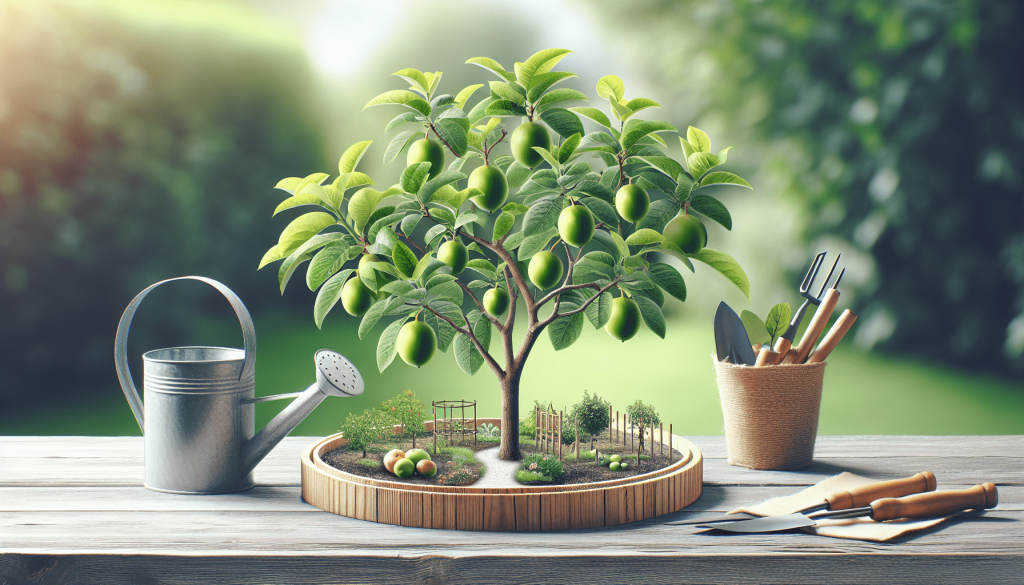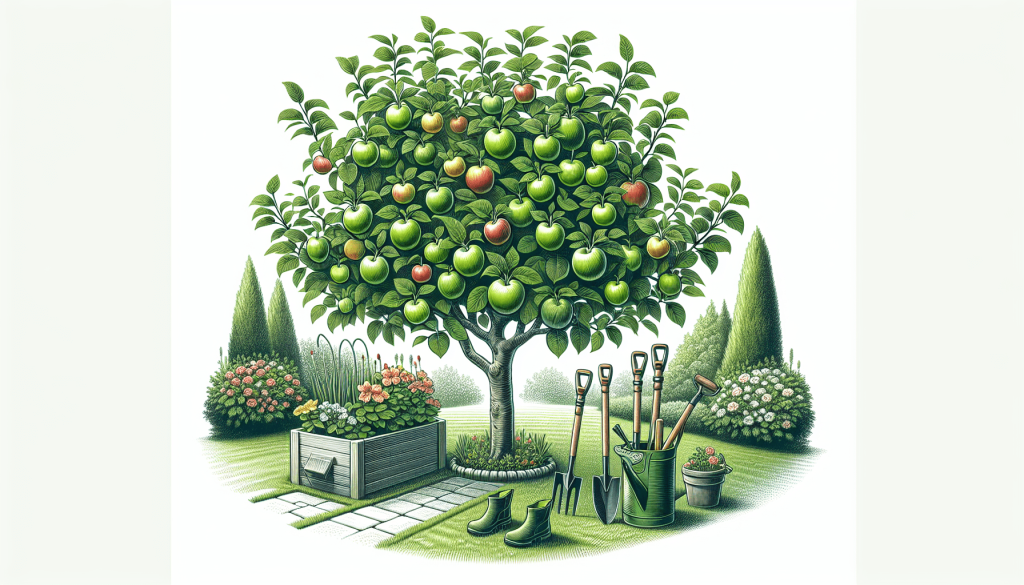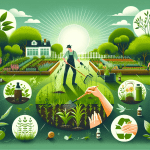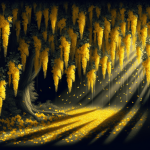This post may contain affiliate links. As an Amazon Associate, we may earn commissions from qualifying purchases.
Embarking on the journey of growing fruit trees in your home garden can transform your backyard into a lush, edible paradise that rewards you with sweet and succulent rewards. Whether you dream of biting into a crisp apple picked right from your tree or savoring a juicy peach that’s never seen the inside of a grocery store, getting started can be simpler than you think. From selecting the right spot with plenty of sunlight to mastering the art of pruning for bountiful harvests, this article will guide you through essential tips that ensure your fruit trees thrive, offering you a delicious bounty year after year.

Choosing the Right Fruit Trees
When you’re dreaming about turning your garden into a lush oasis brimming with delicious fruits, the first steps you take are crucial. Choosing the right fruit trees isn’t just about what fruits you love to eat; it involves a careful consideration of several key factors that will determine the success and productivity of your garden.
Consider your local climate
Your local climate is the most critical factor to consider when choosing fruit trees. Certain fruit trees flourish in warm, sunny climates, while others are adapted to cooler conditions. Be aware of your area’s temperature ranges, frost dates, and the length of growing seasons. This knowledge will help you select fruit trees that are likely to thrive in your garden.
Select varieties that are known to perform well in your area
Research is your best friend here. Look for varieties of fruit trees that have a proven track record in your region. Local nurseries, agricultural extension services, and gardening clubs are excellent resources for finding out which types of fruit trees do well in your local conditions.
Understand the pollination requirements
Some fruit trees, like apple and cherry trees, require cross-pollination from another tree of a different variety but the same species to bear fruit. Meanwhile, others are self-pollinating and don’t need a partner to produce fruit. Understanding the pollination requirements is essential for ensuring a bountiful harvest.
Take into account the size of the mature tree
Space is often a limiting factor in home gardens. Consider how large a fruit tree will grow when it’s mature, and ensure you have enough space for it to spread out. If space is limited, look for dwarf varieties that require less room and are easier to manage.
Understanding Soil Requirements
Fruit trees, like all plants, have specific soil needs that must be met if they are to flourish. Paying attention to soil conditions can mean the difference between a struggling tree and a vibrant, fruit-laden one.
Test soil pH and fertility
Start with a simple soil test to check the pH level and fertility. Fruit trees generally prefer a soil pH between 6.0 and 7.0, although this can vary by species. If your soil’s pH is too low or too high, or if it lacks essential nutrients, you’ll need to amend it before planting.
Amend soil with organic matter if necessary
Incorporating organic matter into your soil can improve its structure, fertility, and moisture retention. Compost, well-rotted manure, and leaf mold are excellent choices. They slowly release nutrients into the soil, enhancing its overall health and fertility.
Ensure good drainage to prevent root rot
Fruit trees despise “wet feet.” Excellent drainage is essential to prevent root rot and other water-associated diseases. If you’re dealing with heavy clay soil or a naturally damp location, consider planting your fruit trees in raised beds or mounds to improve drainage.
Planting Your Trees
Planting fruit trees is an exciting step, but it’s not just a matter of digging a hole and dropping in a tree. The way you plant your trees can significantly influence their chances of survival and productivity.
Choose the right time of year for planting
Timing is everything. The best time to plant fruit trees is in late winter or early spring, after the last frost has passed but before new growth begins. This gives the trees time to establish roots in their new location before the stress of the growing season begins.
Plant at the correct depth
Planting at the right depth is crucial. The root ball should be even with the ground level, and the surrounding soil should be firmly packed to eliminate air pockets. Planting too deep or too shallow can stress the tree and inhibit growth.
Water thoroughly after planting
Give your newly planted trees a good, deep watering to settle the soil and hydrate the roots. This initial watering is crucial for helping the tree recover from the transplant and start establishing itself.
Mulch around the base to retain moisture and reduce weeds
Applying a layer of mulch around the base of your fruit trees can help retain soil moisture, suppress weeds, and maintain a stable soil temperature. Organic mulches, like wood chips or straw, also break down over time to improve soil health.
Watering and Moisture Management
Watering your fruit trees correctly and efficiently is vital for their growth and fruit production. Fruit trees have specific watering needs that vary depending on their stage of growth and the weather.
Understand the watering needs of your specific fruit tree species
Each species of fruit tree has its own water requirements. Some trees, such as citrus, may need more frequent watering, while others are more drought-tolerant. Research the needs of your particular fruit tree species to ensure you’re providing just the right amount of water.
Use drip irrigation or soaker hoses to minimize water waste
Drip irrigation systems and soaker hoses deliver water directly to the root zone of your trees, minimizing evaporation and water waste. These methods also help keep foliage dry, reducing the risk of fungal diseases.
Monitor soil moisture regularly
Regularly checking the soil moisture around your fruit trees can help you avoid over- or under-watering. The soil should be moist but not waterlogged. A simple finger test, inserting your finger a few inches into the soil, can help you gauge moisture levels.
Adjust watering schedule based on weather conditions
Be prepared to adjust your watering schedule based on the weather. Hot, dry conditions will necessitate more frequent watering, while rainy spells may mean you can cut back. Always aim for deep, infrequent waterings that encourage strong root growth, rather than shallow, frequent sprinklings.

Fertilization and Nutrient Management
Fertilization plays a critical role in the health and productivity of fruit trees. The right nutrients can bolster growth, increase fruit production, and help your trees fight off pests and diseases.
Know when and how often to fertilize
The best times to fertilize your fruit trees are early spring and late fall. Avoid fertilizing in late summer or early fall, as this can stimulate new growth that’s vulnerable to early frosts. The frequency and type of fertilizer will depend on the age of your tree and its specific needs.
Use organic fertilizers to improve soil health
Organic fertilizers release nutrients slowly, improving soil health over time. They also support beneficial soil microbes and improve the soil’s water-holding capacity. Options include compost, fish emulsion, and commercially prepared organic blends.
Understand the specific nutrient needs of each tree
Each fruit tree species has its own nutrient requirements. While nitrogen is critical for leaf growth, too much can reduce fruit yield. Phosphorus and potassium are important for root development and fruit production. Conducting a soil test can help tailor your fertilization strategy to meet your trees’ specific needs.
Pruning and Training
Pruning and training fruit trees are essential practices that shape the tree, encourage healthy growth, and increase fruit production.
Learn the basics of pruning fruit trees
The basics of pruning involve removing dead or diseased wood, thinning out crowded branches to improve light penetration and air circulation, and shaping the tree to support its weight. Pruning is typically done during the dormant season.
Prune for shape, health, and productivity
Shape your trees not only for aesthetics but also for structural integrity. Removing competing leaders and weak branches can prevent damage and disease. Thinning the canopy allows sunlight to reach more of the tree, enhancing fruit quality and reducing disease risk.
Consider training trees for easier harvesting and maintenance
Training young trees through methods such as espalier or open-center training can make harvesting easier and improve air circulation around the fruits. This proactive shaping when trees are young can save a lot of effort and increase yields in the long run.
Pest and Disease Management
Dealing with pests and diseases is an inevitable part of growing fruit trees, but many problems can be avoided or mitigated with the right practices.
Identify common pests and diseases
Knowledge is power when it comes to pest and disease management. Learn to recognize the signs of common issues in your area, such as aphids, codling moths, or fungal diseases like powdery mildew.
Use integrated pest management strategies
Integrated Pest Management (IPM) is a sustainable approach to managing pests that combines biological, cultural, physical, and chemical tools in a way that minimizes economic, health, and environmental risks. Strategies might include promoting beneficial insects, employing barriers to prevent pest access, and rotating crops.
Apply organic treatments when necessary
When intervention is necessary, opt for organic treatments whenever possible. Neem oil, horticultural oils, and insecticidal soaps can manage many pest problems without harming beneficial insects or the environment.
Harvesting
Harvesting fruit from your own trees is incredibly rewarding. Knowing when and how to harvest can make a big difference in your enjoyment and the quality of the fruit.
Learn the signs of ripeness
Each fruit has its signs of ripeness, such as color change, ease of detachment, and aroma. Familiarize yourself with these indicators to harvest your fruit at its peak flavor.
Pick fruit carefully to avoid damage
Handle fruit gently during harvest to avoid bruises and punctures, which can lead to spoilage. Use pruning shears or a fruit picker for hard-to-reach fruits to minimize damage.
Understand how to store or preserve your harvest
Some fruits are best eaten fresh, while others can be stored for weeks or even months under the right conditions. Learning about storage and preservation methods, such as canning, drying, or freezing, can help you enjoy your harvest longer.
Winter Care
Winter care is essential for protecting fruit trees from cold damage and preparing them for the next growing season.
Protect trees from frost and freeze damage
Young trees are especially vulnerable to frost and freeze damage. Use frost cloths or burlap to wrap the trees, or employ temporary shelters on exceptionally cold nights.
Apply mulch for insulation
A thick layer of mulch around the base of fruit trees can help insulate the soil and roots, reducing the risk of freeze damage. Mulch also retains moisture and adds organic matter to the soil as it decomposes.
Understand dormancy requirements for your trees
Each fruit tree species has its own dormancy requirements – a period of cold temperatures necessary to stimulate spring growth and fruiting. Understanding these requirements can help you select trees that are compatible with your climate and manage them appropriately through the winter.
Engaging with a Community
Gardening is a shared experience. Engaging with a community of fellow gardeners can enhance your knowledge and enjoyment of growing fruit trees.
Join local gardening clubs or online forums
Local gardening clubs and online forums are great places to meet other fruit tree enthusiasts, share experiences, and get advice. The collective wisdom of a community can be invaluable, especially when you encounter challenges.
Attend workshops or talks on fruit tree care
Many communities and gardening centers offer workshops or talks on various aspects of fruit tree care. These events are excellent opportunities to learn from experts and deepen your understanding of fruit tree cultivation.
Share experiences and learn from fellow gardeners
Never underestimate the power of shared experiences. By engaging with fellow gardeners, you can learn new techniques, discover varieties of fruit trees that might do well in your garden, and find solutions to common problems. Gardening is a journey best enjoyed with others.








